-
 Bitcoin
Bitcoin $107,467.9126
1.26% -
 Ethereum
Ethereum $2,447.5288
-0.12% -
 Tether USDt
Tether USDt $1.0005
0.00% -
 XRP
XRP $2.1921
0.13% -
 BNB
BNB $647.2897
0.50% -
 Solana
Solana $144.8627
-0.37% -
 USDC
USDC $0.9996
-0.03% -
 TRON
TRON $0.2732
0.10% -
 Dogecoin
Dogecoin $0.1652
-0.18% -
 Cardano
Cardano $0.5700
-2.87% -
 Hyperliquid
Hyperliquid $37.0274
-1.81% -
 Bitcoin Cash
Bitcoin Cash $484.6957
0.19% -
 Sui
Sui $2.7354
-2.19% -
 Chainlink
Chainlink $13.1727
-1.49% -
 UNUS SED LEO
UNUS SED LEO $8.9978
-0.04% -
 Stellar
Stellar $0.2421
-2.33% -
 Avalanche
Avalanche $17.5633
-3.51% -
 Toncoin
Toncoin $2.8476
-1.94% -
 Shiba Inu
Shiba Inu $0.0...01166
-0.56% -
 Litecoin
Litecoin $85.1071
0.09% -
 Hedera
Hedera $0.1502
-2.96% -
 Monero
Monero $310.2774
-1.64% -
 Dai
Dai $0.9999
-0.01% -
 Polkadot
Polkadot $3.3584
-1.88% -
 Ethena USDe
Ethena USDe $1.0003
-0.04% -
 Bitget Token
Bitget Token $4.4443
2.90% -
 Pi
Pi $0.6242
14.04% -
 Uniswap
Uniswap $6.9774
-2.86% -
 Pepe
Pepe $0.0...09535
-5.05% -
 Aave
Aave $256.7574
-3.35%
In a downward trend, should I stop loss when the volume rebounds to the 10-day line?
A rebound in volume during a downtrend may signal either increased selling pressure or a potential reversal, depending on price action and technical context.
Jun 26, 2025 at 11:43 am
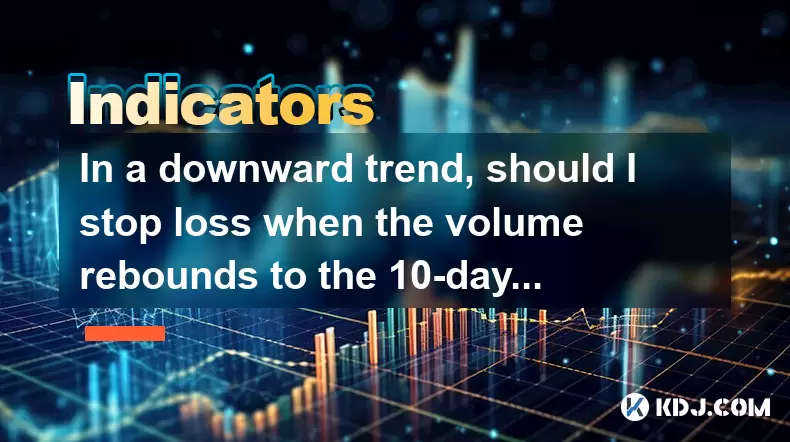
Understanding the 10-Day Volume Line in a Downward Trend
In cryptocurrency trading, volume is one of the most critical indicators for confirming price movements. The 10-day volume line refers to the average volume over the last 10 days and serves as a benchmark for traders to assess whether current volume levels are unusually high or low. When prices are declining but volume rebounds above this 10-day average, it raises a key question: is this a sign of renewed selling pressure or an opportunity for a reversal?
A rebound in volume during a downtrend can indicate increased participation from traders. However, without corresponding price strength, it may signal strong bearish sentiment. This dynamic is crucial when deciding whether to implement a stop-loss strategy.
What Does a Volume Rebound Signify During a Downtrend?
Volume plays a vital role in confirming trend validity. A rebound in volume while the price continues to fall typically suggests that more traders are selling their holdings, which could accelerate the decline. On the other hand, if the price starts stabilizing after such a volume spike, it might suggest that buyers are stepping in.
The interpretation depends heavily on price action context. For example:
- If the price drops sharply with high volume, it often reflects panic selling.
- If the price barely moves downward despite high volume, it could imply accumulation by larger players.
Traders must analyze candlestick patterns and support/resistance levels alongside volume behavior to make informed decisions about stop-loss placement.
Should You Trigger a Stop-Loss Based Solely on Volume?
While volume is a powerful indicator, relying solely on its rebound to the 10-day line for triggering a stop-loss can be risky. Cryptocurrency markets are highly volatile, and volume spikes can occur due to various factors including news events, whale activity, or even short-term pump-and-dump schemes.
Instead of acting immediately, traders should consider:
- Whether the volume surge coincides with a breakdown below key support levels
- If there's a failure to hold a previous consolidation zone
- Whether other technical indicators like RSI or MACD confirm bearish momentum
Using multiple filters ensures that stop-loss orders are not triggered prematurely due to false signals or temporary market noise.
How to Set Strategic Stop-Loss Levels in a Downtrend
Setting effective stop-loss points involves more than just reacting to volume fluctuations. Here’s how you can approach it strategically:
- Identify recent swing lows: These act as natural support areas. Placing a stop below these levels allows room for normal price movement while protecting capital.
- Use moving averages: Combining volume analysis with tools like the 20-day EMA helps identify stronger resistance zones where price may stall again.
- Observe candlestick formations near stops: Long wicks or engulfing candles may indicate rejection of lower prices and warrant reevaluating your stop level.
By integrating these methods, traders can avoid being stopped out too early during normal retracements or fake breakouts.
Backtesting Your Strategy Before Live Trading
Before applying any stop-loss rule based on volume rebounds, it's essential to backtest the strategy using historical data. Many crypto traders overlook this step, leading to emotional decision-making under real market conditions.
To effectively backtest:
- Use platforms like TradingView or Binance’s historical data tools
- Apply the 10-day volume line overlay and observe past instances where volume surged during downtrends
- Analyze how price reacted afterward—did it continue falling or bounce?
- Adjust your stop-loss placement rules accordingly
This practice builds confidence in your methodology and reduces the likelihood of making reactive decisions during live trades.
Frequently Asked Questions (FAQs)
Q1: What is the difference between volume rebound and volume breakout?
A volume rebound simply means volume has risen back to its 10-day average, whereas a volume breakout occurs when volume significantly exceeds the average, often signaling a potential change in trend or momentum.
Q2: Can I use the 5-day volume line instead of the 10-day line for quicker reactions?
Yes, the 5-day volume line provides more responsive signals but also increases the risk of false positives. It's better suited for intraday or scalping strategies rather than position trading.
Q3: Should I adjust my stop-loss if the price consolidates after a volume surge?
If the price enters a tight range following a volume rebound, it may indicate indecision. In such cases, adjusting the stop closer to the entry point or trailing it behind the consolidation can help manage risk effectively.
Q4: How do I differentiate between a healthy pullback and a trend reversal using volume?
Healthy pullbacks usually see decreasing volume, suggesting sellers are losing control. A trend reversal often features rising volume with sharp price moves against the prevailing trend. Monitoring both volume behavior and candlestick structure together offers clearer insights.
Disclaimer:info@kdj.com
The information provided is not trading advice. kdj.com does not assume any responsibility for any investments made based on the information provided in this article. Cryptocurrencies are highly volatile and it is highly recommended that you invest with caution after thorough research!
If you believe that the content used on this website infringes your copyright, please contact us immediately (info@kdj.com) and we will delete it promptly.
- Ethereum Ecosystem's $7.3B Fee Bonanza: Tether, Circle, Lido Lead the Charge
- 2025-06-26 17:05:11
- Bitcoin, Cryptocurrency, Price Rise: What's the Deal?
- 2025-06-26 16:30:11
- Pepe Mania: Whale Buys and the Meme Coin Frenzy
- 2025-06-26 16:50:13
- Bitcoin Price: Riding the Upward Trend – Will BTC Hit New Highs?
- 2025-06-26 16:50:13
- Bitcoin Price Prediction, June 27: Will the Rally Continue?
- 2025-06-26 17:07:13
- Coinbase Soars: Sanford Bernstein's Bullish Price Target and the Genius Act
- 2025-06-26 16:54:12
Related knowledge
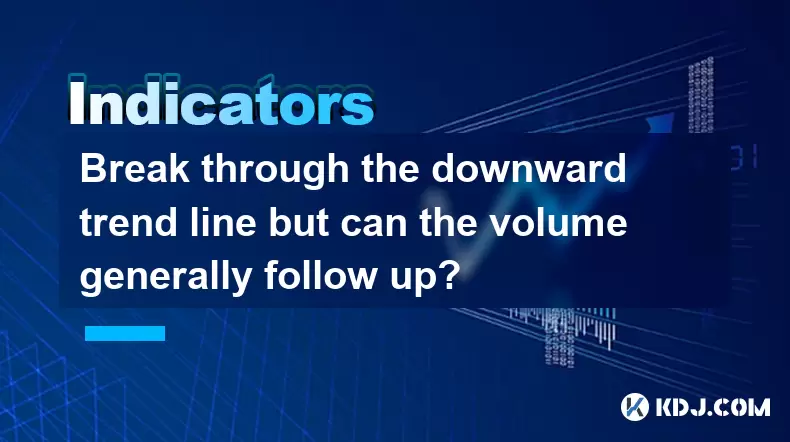
Break through the downward trend line but can the volume generally follow up?
Jun 26,2025 at 05:28pm
Understanding the Significance of Breaking a Downward Trend LineIn technical analysis, a downward trend line represents a resistance level formed by connecting two or more high points in price action. When the price breaks above this line, it suggests that the selling pressure may be weakening and that buyers are gaining control. This is often seen as a...
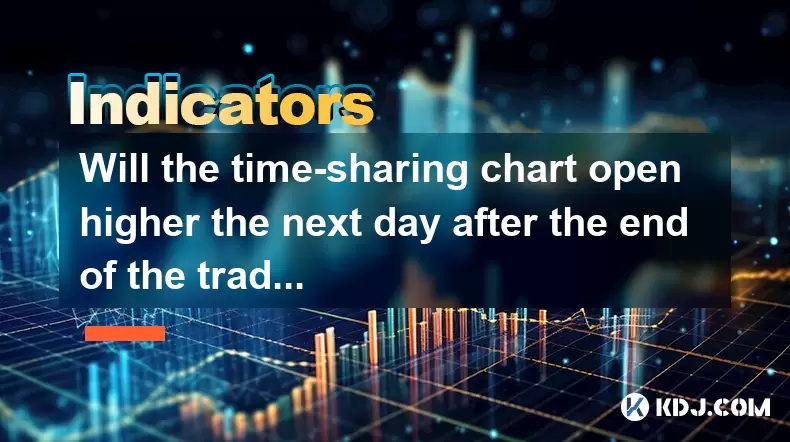
Will the time-sharing chart open higher the next day after the end of the trading?
Jun 26,2025 at 04:35pm
Understanding Time-Sharing Charts in Cryptocurrency TradingIn the realm of cryptocurrency trading, time-sharing charts, often referred to as tick or intraday charts, play a crucial role in analyzing short-term price movements. These charts display price fluctuations over very small time intervals, such as 1 minute, 5 minutes, or 15 minutes. Traders rely...
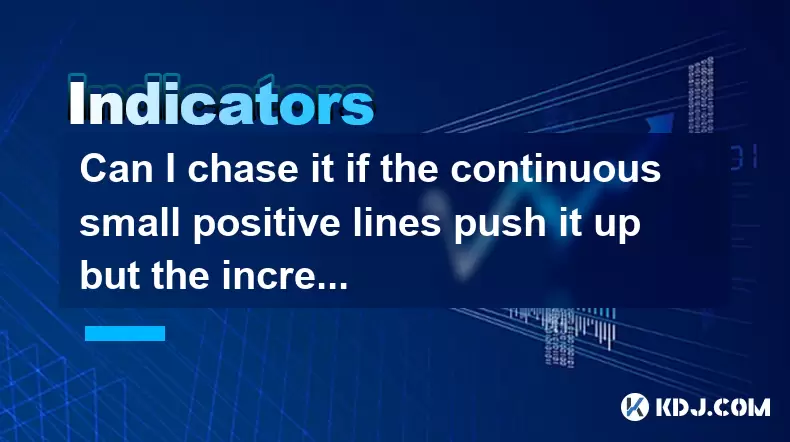
Can I chase it if the continuous small positive lines push it up but the increase is limited?
Jun 26,2025 at 03:42pm
Understanding the Concept of Continuous Small Positive LinesIn the realm of cryptocurrency trading, continuous small positive lines refer to a pattern where an asset's price consistently rises in small increments over a period. These movements are typically observed on candlestick charts and can indicate underlying strength or accumulation by larger pla...
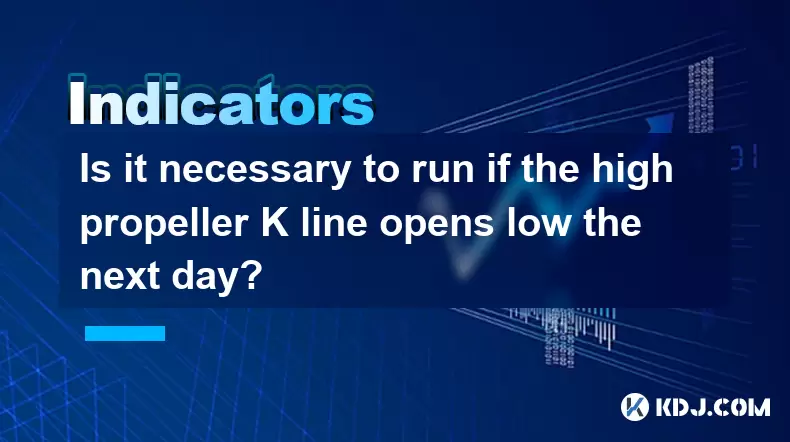
Is it necessary to run if the high propeller K line opens low the next day?
Jun 26,2025 at 01:42pm
Understanding the High Propeller K LineA high propeller K line is a candlestick pattern that typically indicates indecision in the market. It features a small real body with long upper and lower shadows, suggesting that both buyers and sellers are active. This pattern often appears during periods of volatility and can signal potential reversals or conti...

Is it a reversal confirmation if the long lower shadow line at a low position opens high the next day?
Jun 26,2025 at 03:08pm
Understanding Candlestick Patterns in Cryptocurrency TradingIn the world of cryptocurrency trading, candlestick patterns are widely used by traders to analyze market sentiment and predict future price movements. These visual representations provide insights into buying and selling pressures at specific price points. One such pattern that often catches t...

In a downward trend, should I stop loss when the volume rebounds to the 10-day line?
Jun 26,2025 at 11:43am
Understanding the 10-Day Volume Line in a Downward TrendIn cryptocurrency trading, volume is one of the most critical indicators for confirming price movements. The 10-day volume line refers to the average volume over the last 10 days and serves as a benchmark for traders to assess whether current volume levels are unusually high or low. When prices are...

Break through the downward trend line but can the volume generally follow up?
Jun 26,2025 at 05:28pm
Understanding the Significance of Breaking a Downward Trend LineIn technical analysis, a downward trend line represents a resistance level formed by connecting two or more high points in price action. When the price breaks above this line, it suggests that the selling pressure may be weakening and that buyers are gaining control. This is often seen as a...

Will the time-sharing chart open higher the next day after the end of the trading?
Jun 26,2025 at 04:35pm
Understanding Time-Sharing Charts in Cryptocurrency TradingIn the realm of cryptocurrency trading, time-sharing charts, often referred to as tick or intraday charts, play a crucial role in analyzing short-term price movements. These charts display price fluctuations over very small time intervals, such as 1 minute, 5 minutes, or 15 minutes. Traders rely...

Can I chase it if the continuous small positive lines push it up but the increase is limited?
Jun 26,2025 at 03:42pm
Understanding the Concept of Continuous Small Positive LinesIn the realm of cryptocurrency trading, continuous small positive lines refer to a pattern where an asset's price consistently rises in small increments over a period. These movements are typically observed on candlestick charts and can indicate underlying strength or accumulation by larger pla...

Is it necessary to run if the high propeller K line opens low the next day?
Jun 26,2025 at 01:42pm
Understanding the High Propeller K LineA high propeller K line is a candlestick pattern that typically indicates indecision in the market. It features a small real body with long upper and lower shadows, suggesting that both buyers and sellers are active. This pattern often appears during periods of volatility and can signal potential reversals or conti...

Is it a reversal confirmation if the long lower shadow line at a low position opens high the next day?
Jun 26,2025 at 03:08pm
Understanding Candlestick Patterns in Cryptocurrency TradingIn the world of cryptocurrency trading, candlestick patterns are widely used by traders to analyze market sentiment and predict future price movements. These visual representations provide insights into buying and selling pressures at specific price points. One such pattern that often catches t...

In a downward trend, should I stop loss when the volume rebounds to the 10-day line?
Jun 26,2025 at 11:43am
Understanding the 10-Day Volume Line in a Downward TrendIn cryptocurrency trading, volume is one of the most critical indicators for confirming price movements. The 10-day volume line refers to the average volume over the last 10 days and serves as a benchmark for traders to assess whether current volume levels are unusually high or low. When prices are...
See all articles
























































































